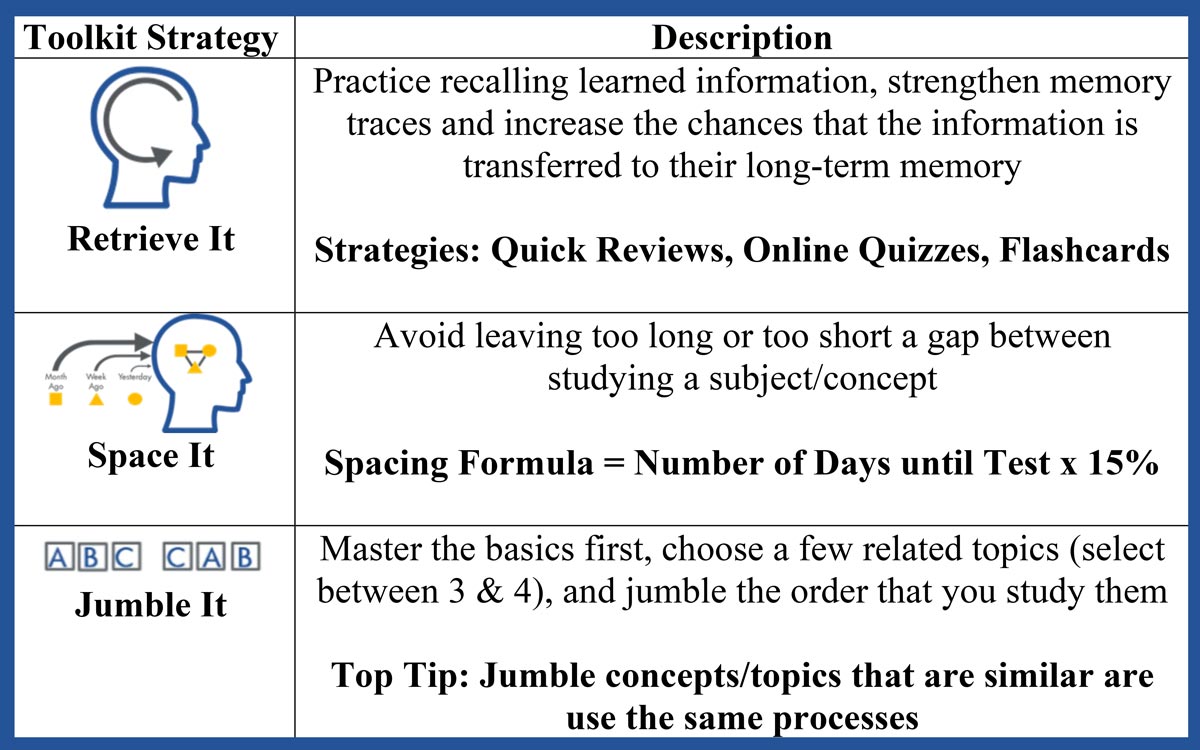This term in Year 8 and 9 ALT, our focus is on using the collective habits work of Prof Wendy Wood, Prof Logan Fiorella and James Clear to focus, track, and visualise student studying over the coming term. The aim is to lay the necessary foundation required to turn the notion of study into a reliable habit. Importantly, we are taking a new angle in habit formation, as most of us rely on distant goals, good intentions and willpower to change old or forge new habits.
How to use the hard copy Journal?
The Journal presents a one-stop-shop for all studying in Term 2. The design and layout reflect spaced retrieval principles that a boy should aim to complete AT LEAST TWO study sessions (with at least a day’s space between) for each subject. The aim is to circumvent the reliance on cramming (which builds anxiety and fatigue) to be the go-to strategy. Doing little bits often leads to a significant learning gain. Over Term 2, completing the Journal equates to approximately 20 hours of study (4 hours in 5 subjects) distributed across 8 weeks. Here the focus is to accumulate and compound (like compound interest builds wealth over an extended period of time) a collective effort.
Why is it essential to track and visualise study?
By completing all studies in the same Journal, boys will be able to track and visualise what they have achieved. Tracking provides visual proof of your hard work – a subtle reminder of how much you have already done and how far you have come. Tracking and visualisation are critical for supporting an individual through the plateau of latent potential – the lag between doing what we need to do and seeing the results we want to see. Tracking crystallises our good intention into a tangible representation of effort.
How long should a study session be?
A study session should be between 15 to 20 minutes. By using a defined and reasonable period, the study session is likely to be more effortful and purposeful. By engendering effort, one aids their learning while curtailing the influence of procrastination.
The Journal’s layout
The most significant hurdle to studying, or starting/keeping a habit, is getting started. Commencing a study session with a blank page presents a substantial barrier for many people. The Journal’s visual layout is aimed to remove the guesswork of how to get started. Each page has a pre-made Quick Review Template and a free space for a Brain Dump or other retrieval activity. The boys can also track their practice if they make/use flashcards, complete a practice test, online quiz, or further study activity on the subject tracker page.
What should be the focus of study in the initial weeks of a term?
At this early stage of the term, your study sessions are likely to be either looking back at the material covered last term (not forgetting that many subjects will examine you on whole semester content) or based on new content given so far. The inbuilt spacing and jumbling found in Brain Dumps, Flashcards, online quizzes and Quick Review can help construct those connections that we know are essential to building understanding.
How will the Journal be used in ALT classes this term?
The boys are responsible for keeping their study journal for the term and bringing it to each ALT class. If they lose it, they will need to photocopy a clean copy (the Year 8 and 9 versions are attached). All study journals will be collected at the end of the term and contrasted against their academic performance and learning behaviours.




